#kofuku ji
Text
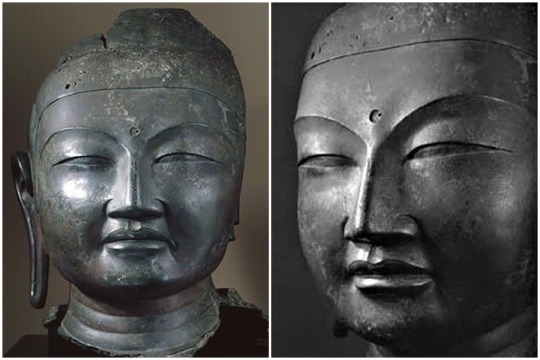
Head of Yakushi
Kofuku-ji Temple
Nara, Japan
"Dated to 685, this cast copper alloy head formerly belonged to a sculpture of the Buddha Master of Medicine (Jp. Yakushi Nyorai) that was originally enshrined at Yamadadera Temple in Asuka, a town about 20 kilometers south of the city of Nara, and the capital of Japan at the time of the image’s construction."( via )
2. via
96 notes
·
View notes
Text

Gojunoto, Kofuku-ji
Nara, Japan
#japan#2023#jpn23#nara23#nara#architecture#buildings#photography#places#lensblr#photographers on tumblr#photo#travel#wanderlust#travel photography#pagoda#shrine#temple#sky
43 notes
·
View notes
Text

Watashi no na wa Kira Yoshikage. Renrei sanjyuu sansai. Jitaku wa Morioh-cho hokuto no bu no bessojidai ni ari, kekkon wa shiite-inai, Shigoto wa Kame-yu chen-ten no kai sha-in de, maiinichi osokuto mo yoru hachii-ji made ni wa kitakusuru Tabaco-o wa sumanai, sake wa tashinamu-tedo, yoru juu-ichi ji ni wa toko nitsukii, kanarazu hajii-jikan wa suii-min o toru yo-o ni shiiteiru. Neru mae ni at-ta-kae miruuku o nomi ni-juu pun hodo no suutorechi de karada o homu-shite kara toko nitsuku-to hodon do asa made jukusui-sa Akanbo no yo ni hiro ya suutoresu o noku sazu nii asa me o samaserunda. Kenko-o shintan de mo ijyo nashito iwaretaiyo. Watashi wa tsune nii kokoro o heion o ne-gate ik-terun ningen toyukoto o setsumei-shite-iru no dai-yo. Kachi make ni koda wa-tari, atama o kakaeruyoo na torabuuruu to ka, yoru mo nemurenai to ita teki o tsukuranai. Toyuu no ga watashii no shakai ni taisuru shise de ari, sorega jibun no kofuku da to toyuukoto o shiteiru. Mo-tomo tatakatte da toshitemo, watashi wa dare ni mo makenn ga ne...
#fanart#kira yoshikage#jojos bizarre adventure#diamond is unbreakable#kira queen#jjba part 4#jjba fanart#my fave character in jjba#ill offer my hand to kira anyday
11 notes
·
View notes
Video
A short time-lapse clip of the Five Story Pagoda of Kofuku-ji with reflections in the Araike pond, Nara City-Japan.
#タイムラプス #timelapse #nara #奈良市 #narajapan #visitjapanus #visitjapanjp #visitjapan #visitjapanau #kofukuji #興福寺 #pagoda #五重塔 #pond
35 notes
·
View notes
Text
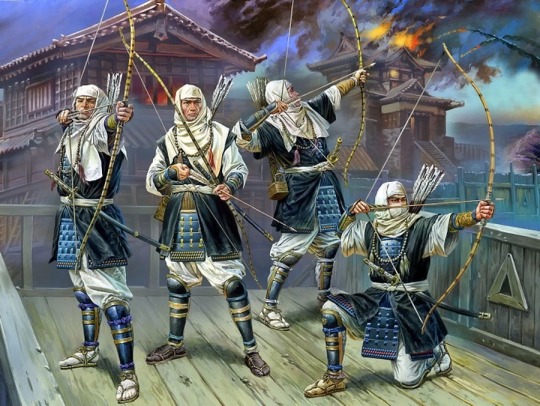
From a bad translation, Russian to English. Unedited because I’m too lazy.😁🤷🏽
SOHEI - BUDDHIST WARRIORS OF ANCIENT JAPAN
Sohei ( дат Sohei, literally "monk-soldier") - Buddhist warrior monks of feudal Japan. At certain points in history, they had considerable power, thus forcing imperial and military governments to cooperate.
They were similar to the mountain ascetes of yamabushi, but unlike the yamabushi hermits, the soheis were usually organized into large armies or units. Most famous is their Enryaku-ji Monastery on Mount Heei, not far from Kyoto.
Many common traits the Soheis had with warrior monks from Germany or other religious orders (for example, such as participating in a crusade; the Soheis did not operate as individuals or even as members of individual temples, but rather as warriors of the Great Brotherhood or monastic order).
Warrior monks first “claimed themselves” in the late 10th century, in the Heian era, during fierce political disputes between Buddhist temples and sects over receiving various titles from the emperor. The main confrontation took place in the area of Kyoto and Nara cities, in Japan's 4 largest temples - Todai-ji, Kofuku-ji, Mii-dera and Enryaku-ji.
The first armed encounter occurred in 949. , when 56 monks from Todai-ji came out to the Imperial Palace in Kyoto to protest against their inconvenient assignment. These kinds of performances lasted throughout the 10th century and often ended in a murder.
Since 981 Clashes began between the 2 main temples of the Tendai Buddhist sect - Enryaku-ji and Mii-dera. Armed clashes between these temples lasted with breaks throughout the 11th century and early XII. Along with the armies, violence has also increased. Sometimes it even came to the burning of an unfriendly residence. Other temples were also gradually involved in conflicts, joining forces with yesterday's enemies to confront other temples.
A prolonged civil war began in Japan at the end of the 12th century. Temples distracted themselves from constant windows, observing events happening in the country. Hostile houses of Minamoto and Tyra tried to persuade warrior monks of Kyoto and Nara to replenish their samurai armies. The Sohei claimed themselves in 1180, when the Mi-dera monks along with the samurai of the Minamoto house tried to protect the bridge across the Uji River from the invasion of Tyra troops. During this battle, known as the Battle of Uji, the monks disassembled the pillars of the bridge so that the horse samurai could not cross the river.
After the Gampay war, many monasteries began to reform. Their political power grew generally in peaceful ways, and the Soheis almost did not participate in the battles of the 13th-XIV centuries. During the wars of the Nambokuteo-era, Mount Hyei gave refuge to the rebellious Emperor Go-Daigo. With his son and soheis, he tried to gather forces for a short-term rebellion against the Kamakura shogunate. After this, another military government, the Asikaga shogunate, came to power, bringing an end to the restoration of Kammu. The new shogunate supported the Zen sect more than others, and therefore attracted the wrath of warrior monks. From 1340 to 1360, many clashes occurred between the temples of the Zen and Tendai sect.
The Onin War, which began in 1467, dragged on more than a century-old civil war in Japan and forced warrior monks to reform again. In contrast to the turmoil of the Jekyu years and the invasion of the Mongols in the XIII century, the main theater of the Onin war became Kyoto, and therefore the Sohei could not stay away. In addition, new sects of warrior monks appeared in the country. While monks from Mount Hiyei were adherents of the Tendai doctrine, the newly-baked monks, who were given the collectively name ikko-ikki, followed the rules of the jodel-sinsu (True School of the Pure Earth). This practice was followed, among others, by many fundamentalist priests, peasants and houses, who were ready to fight for their beliefs. In 1488, their leader, named Rennyo, raised a rebellion against the power of the samurai, and warrior monks seized the province of Kaga. From this direction they began to expand, capturing the temple of Isiyama Hongan-ji in Nagashima (sovr. Mie Prefecture). A little later, part of the land in Mikawa province (part of the sovr.) came under their control. p. Haiti). Their power and influence drew the attention of some of the mightiest princes of the warring provinces, Oda Nobunagi and Togukawa Ieyasu. They considered the warrior monks as the enemies of the samurai laws and a threat to their power. Yeyasu attacked the monks of Mikawa in 1564, but failing to defeat them in battle, he returned later with the monks of his friendly Jedo-syu school, winning and taking almost all of the possessions from the losers.
While the power of Oda Nobunagi was strengthening and expanding in the late 1560s, the Enryaku-ji monks were gaining military strength and clashes were resumed on the streets of Kyoto, now with the new Nitiren Buddhist sect. After defeating the enemy, they began to look for allies among the dimes. To their misfortune, they contacted the houses of Asai and Asakura who were sworn enemies of Nobunag. 29 September 1571 The 30 thousand Oda army stormed Mount Hyei and burned down the Enryakudzi Monastery. Although the temple itself will be restored later, there were no more warrior monks in it.
Then Oda Nobunaga fought the ikko-ikki in their forts of Nagasima and Isiyama Hongan-ji. In the summer of 1574, with the help of the old pirate Kuki Yoshitaki, Nobunaga blocked their forts and began to starve the monks. 20 thousand people were burned along with their homes. Two years later, Nobunaga returned to Isiamu Hongan-ji, a temple he failed to conquer last time. In two maritime battles under Kidzugawaguti Nobunaga, the house of Mori, whose fleet was still considered to be the strongest in the region. Finally, the Soheis were forced to surrender in 1580.
Between 1580 and 1590, not only warrior monks, but all of Japan was divided into two camps: supporters of Toyotomi Hideyoshi or his opponent in the struggle for power - Tokugawa Ieyasu. When was the last one in 1603 finally will gain full power over the whole country, the Sohei era will end forever.
The Soheis had quite a variety of weaponry. Although most commonly associated with naginata, warrior monks also often used bows, tanto (daggers) and wakidashi (short swords).
The Soheis, like other Buddhist monks, wore kimono-like clothes, usually white at the bottom and beige at the top. They wore traditional Japanese sandals on their feet (this one, Varaji, etc.) ). The head was covered with white scarves or a hatimaki bandage.
The attire of the Ikko-ikki monks was a little more diverse due to their peasant origins, ranging from simple rural attire to various types of bras and helmets. In addition to the aforementioned armament, the icco-icca monks had a small number of arkebuses.
35 notes
·
View notes
Text

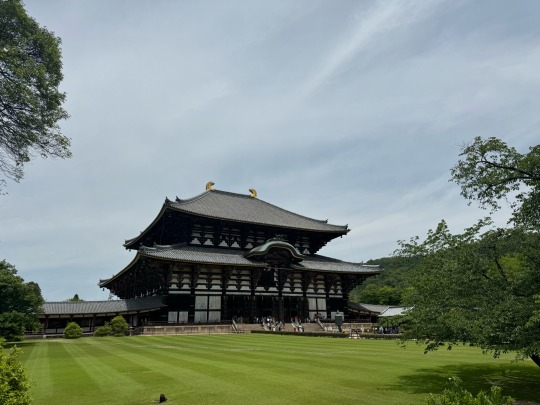





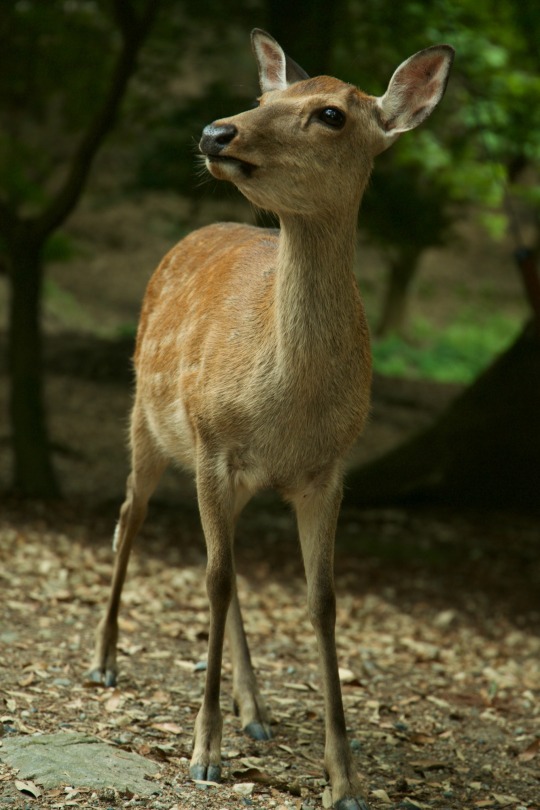
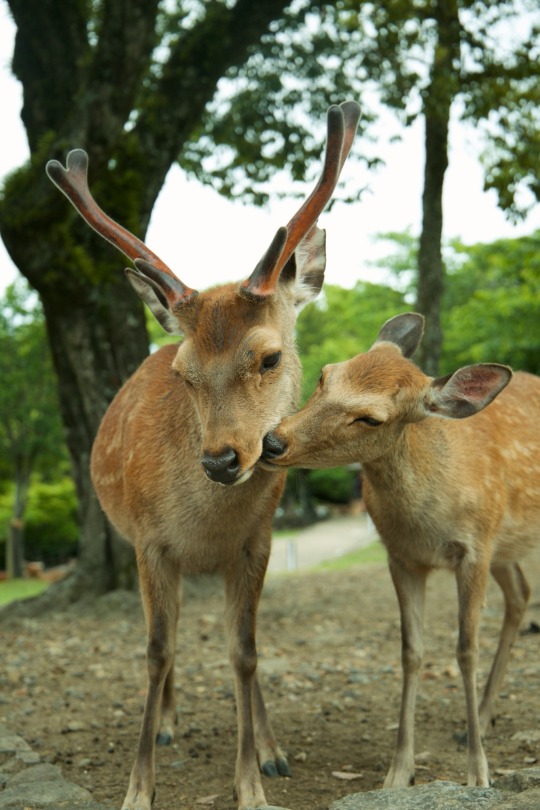

Day 11 (part one) - Nara
We got a 45 minute train from Kyoto to Nara, from the station the first of the three temples was only a 5 minute walk away, Kofuku-ji. A red temple with historic Buddha statues inside.
The next temple was a 25 minute walk, but it just so happened to pass the deer park, there were multiple stands selling the deer crackers for ¥200 for 8 crackers. The deer in this park were a little spoilt and greedy and if you didn’t feed them quick enough they bit you and pulled at your bag and clothes.
Tōda-ji temple is the biggest wooden structure in the world, today it is only 1/3 of the size it used to be as it was destroyed twice through fires. The building is 57 meters long, 50 meters wide and 47 meters tall. It also houses a 15 meter tall Buddha which is the largest bronze statue in Japan.
Then off to the third temple Kasuga Taisha, on both paths leading to the temple there are 2000 stone lanterns lining the path. Then once inside there are over 1000 bronze lanterns hanging from the beams.
From here we headed back to the station, not without feeding some more deer. This time around we learnt our lessons and tried to feed individual deer, it was a much nicer experience and most of them wanted a little scratch behind the ear too! The not so spoilt ones are so lovely, calm and tame and seemed happy to see us!
2 notes
·
View notes
Photo

春日東西両塔跡
春日塔跡は春日大社の一の鳥居を入った参道の左側 (現在の奈良国立博物館構内) に、東西に並ぶ2基の塔跡である。神仏習合思想にもとづいて神社にも仏教の塔を建立した代表的遺構であり、両塔のありし日の偉容は多くの春日宮曼荼羅に描かれている。
西塔(現在地より西へ約90m)永久4年(1116)に関白藤原忠実により造営され、東塔(現在地)は鳥羽上皇の本願により保延6年(1140)に建立された。そのため西塔は"殿下の御塔"、東塔は"院の御塔"と称されていた。ところが治承4年(1180)に平重衡の南部焼打にあって焼失し、相次いで再建されたものの、応永18年(1411)の雷火にあって再び焼失した。その後は再建されることなく今日におよんでいる。
両塔は、1965年(昭和40)の発掘調査によって規模や構造が明確になった。その規模は興福寺五重塔とほぼ同じであり、高さ約50m、初層の一辺長約8.6mで、東塔の初層には裳階がつけられていた。また塔の南正面には複廊を築いて数門を設け、東、西、北の三方には一辺約100mの築地をめぐらしていた。
奈良国立博物館
東塔跡 (東より 1965年発掘時)
西塔跡 (西より 1965年発掘時)
現在地
東塔
西塔
春日宮曼荼羅 部分 (奈良市南市町自治会蔵 鎌倉時代 重要文化財)
Vocab
春日 (かすが)Kasuga
東西 (とうざい)east and west
塔跡 (とうあと)ruins of a tower
春日大社 (かすがたいしゃ)Kasuga-taisha
参道 (さんどう)road approaching a shrine
構内 (こうない)premises, grounds
神仏習合 (しんぶつしゅうごう)Shinto-Buddhist syncretism
建立 (こんりゅう)(act of) building (temple, monument, etc.)
遺構 (いこう)(archaeological) remains
ありし日 (ありしひ)the olden days, days of yore
偉容 (いよう)dignified/majestic/imposing appearance
宮曼荼羅 (みやまんだら)shrine mandala
永久 (えいきゅう)Eikyuu era (7.13.1113-4.3.1118)
関白 (かんぱく)chief advisor to the Emperor
藤原忠通 (ふじわらの・ただざね)Fujiwara no Tadazane
造営 (ぞうえい)building (a temple, palace, etc.)
鳥羽天皇 (とば)Emperor Toba
(じょうこう)retired emperor
本願 (ほんがん)Amida Buddha’s original vow/Primal Vow
保延 (ほうえん)Hoen era (4.27.1135-7.10.1141)
殿下の御塔 (てんかのみとう)Tenka no mitou
称す (しょうす)to take the name of
治承 (じしょう)Jisho era (8.4.1177-7.14.1181)
平重衡 (たいらの・しげひら)Taira no Shigehira
南部 (なんぶ)southern part; the south (of a region)
焼打 (やきうち)setting on fire
焼失 (しょうしつ)destruction by fire
相次いで (あいついで)one after the other, successively
ものの although, despite the fact
応永 (おうえい)Oei era (7.5.1394-4.27.1428)
雷火 (らいか)fire caused by lightning
及ぶ (およぶ)to befall, to happen to, to go on (for, until)
発掘調査 (はっくつちょうさ)excavation, dig
規模 (きぼ)scale, scope, plan, structure
興福寺 (こうふくじ)Kofuku-ji
一辺 (いっぺん)side of a geometic shape
裳階 (もこし)pent roof (below the true roof of a pagoda, etc.)
複 (ふく)multiple
廊 (ろう)corridor, passage, hall
築く (きずく)to build, construct
設ける (もうける)to set up, establish
築地 (ついじ)mud wall with a roof
巡らす (めぐらす)to enclose (with), surround (with)
自治会 (じちかい)neighborhood council
蔵 (ぞう)possession, ownership
14 notes
·
View notes
Text


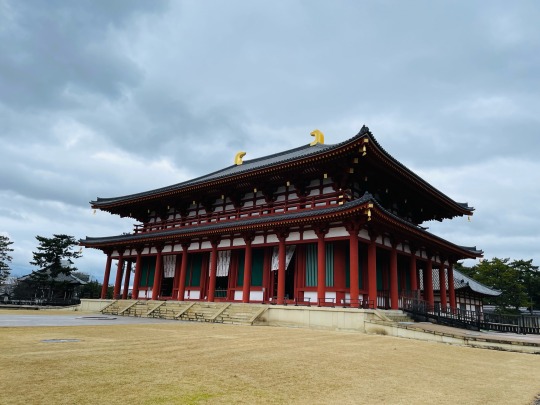





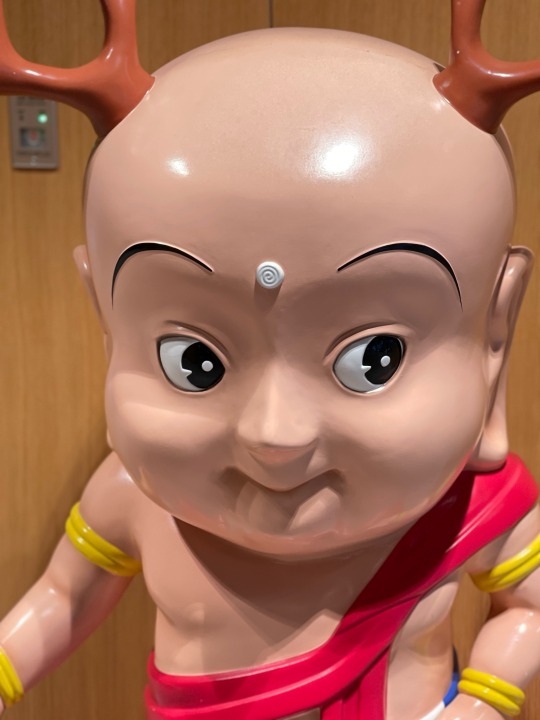

February 22nd 2024
Train to Nara
Kofuku-ji
Cat Store
Lunch @ China Hiten
Mochi at Ben Zai Ten
Lots of deer
Todai-ji
Kasuga Taisha
Dinner @ Choice
2 notes
·
View notes
Text
A Spring Night's Dream
Summary: Kiku watches as Taira Clan crashes and burns
The morning that Japan met Tadamori, the first Taira to enter the imperial court, he was awoken by bells.
Tadamori was chaotic and ambitious and was the first samurai to serve the Emperor. Tadamori helps deal with pirates, but there is not much more Japan can say about him.
Tadamori dies, and his son Kiyomori is much more successful than his father. He helps the Emperor put down rebellions, and soon, the Taira family is everywhere; they occupy almost every government position.
Kiyomori is even more prideful and arrogant than his father, parading around like he owns the place, and Japan comes to hate him. Just not enough to kill him.
However, some people hate him that much, even the former Emperor. They start a plot to overthrow him, but Kiku truthfully doesn't care enough to stop them.
Then, a fire turns the palace into cinders, and suddenly, Kiku has more significant problems.
Taira No Kiyomori eventually finds out about the plot, and he has the monk executed and the rest of them exiled to some island. Kiku hears that a piece of a stupa they made reached the shore; Kiku feels terrible for them.
Kiku doesn't feel bad for them for long. Kiyomori's daughter falls sick while pregnant, and everybody blames it on the angry spirits of the people he executed and exiled. Kiyomori's son is allowed to come home, but Kiku is pretty sure one of them was left on the island.
The imperial prince is born and is as annoying as all babies can be. A whirlwind strikes the capital, which only serves as an omen for future bad things.
Shigemori, the only Taira that Kiku could bear to hang around with, dies of an illness; on his deathbed, he confesses to Kiku that he asked the gods for a quick death if the Taira Clan is to fall.
Without Shigemori's restraining influence, Kiyomori is on the brink of war, and Kiku prepares for more pain.
But in good news, Kiyomori's daughter gives birth to a son!
The Emperor is forced to retire, and a 2-year-old claims the throne. Indeed, the toddler holds no real power, and it's all his grandfather. Still, Kiku relaxes by entertaining him without thinking too hard about what will eventually come of him.
Kiku's assumption about trouble to come is sadly correct because retired Emperor Go-Shirakawa's second son, Prince Mochihito, is convinced by an old friend of Kiku's named Minamoto No Yorimasa to claim the Emperor.
The whole thing worsens because Kiyomori's son, Taira no Munemori, steals Minamoto No Yorimasa's horse.
And suddenly, Kiku is preparing for a battle against many sohei. They fight bravely but are swiftly and quickly defeated by the Taira forces. Minamoto No Yorimasas commits seppuku inside the temple while his two sons fight outside. They capture and kill Prince Mochihito shortly after the battle is over.
Kiku is relieved that this ordeal seems to be over. Still, when he hears that one of Prince Mochihito's sons has fled north to join up with more anti-Taira forces, he considers committing seppuku himself. Also, Kiyomori burns down so many temples he might as well have been praying for defeat.
Kiyomori moves the capital to Fukuhara-kyo, and then he laments about strange visions he sees of skulls and ghosts, and Kiku knows he is doomed.
A person that Kiku thought he would never see again comes up, and a monk named Mongaku convinces Minamoto No Yori to also rebel against the Taira. And honestly, Kiku needed to find out where Kiyomori got all those enemies.
Kiku only stays at Fukuhara-kyo briefly, and soon they're moving back to Kyoto. Then, monks at Kofuku-ji kill messengers that Kiyomori sent, fearing an attack. Then Kiku discovers why Kiyomori has so many enemies.
He lays siege to Nara, destroying every temple, scripture, and statue. Only one survives. Memories that Kiku held dear.
Now, Kiku watches the Taira clan fall with glee.
Kiso no Yoshinaka (cousin of Minamoto No Yoritmoto) has also started a rebellion, which causes Kiku more happiness despite his growing migraines.
Another good thing that happens is that Kiyomori falls ill. His fever is so high that even water sprayed on him turns to black dust and ash, but a famine follows his death, leaving Kiku starving no matter how much he ate.
Despite all of this happening, the Taira are still winning. At the siege of Hiuchi, despite Minamoto heavily defending the fort, a traitor inside the fort sent a message about how to get over the defenses.
And while Kiku could quickly sabotage their workings, he still had no desire to see any of his people get killed, regardless of what they were doing was wrong.
The tides of the war would change later that year with the Battle of Kurikara. First, the Taira general assumed that the Minamoto had a more enormous army than they actually had, and then he started a formal battle.
First, the archery exchanges using whistling-bulb arrows and individual duels amongst 100 samurai.
But as the sun set, the Taira had found themselves surrounded by another Minamoto detachment, holding many more flags than they should've, convincing the Taira even more that they were facing off against a dangerous threat.
Then they released a herd of oxen down the pass with lit torches tied to their horns. Many of the Taira soldiers, including himself, were knocked off the path, meaning that the Minamoto captured him. Something he didn't end up minding all too much.
Kiku was executed for the show, but after he came back once again, he was given his duties.
A string of victories followed for the Minamoto, and the war would end with a naval battle. But this upcoming maritime battle would be difficult. The Taira were skilled in their sailing and naval tactics. But the Minamoto had more ships and allies.
The Taira had their fleet divided into three squadrons, while the Minamoto fleet was all together. The tide changed when the ships came close for people to board the other's ships. Then Taguchi Shigeyoshi did indeed defect to the Minamoto side and told them which ship the Emperor, along with the imperial regalia.
Once Taguchi told them that, Kiku knew what they were about to do.
He jumped from ship to ship; Taira soldiers committed suicide by jumping into the ocean. Kiku reached the Emperor's craft, where most rowmans had already been shot dead.
Kiku ran around the boat. He found the mirror in the hand of a dead attendant, but the other two were nowhere to be found. Kiku made his way to the front of the boat, where an attendant stood.
"They jumped into the water!" She yelled. Kiku's eyes widened, "who?" The attendant gestured to the water. "Kiyomori's widow and the Emperor. They tossed the Imperial Regalia into the ocean!"
Kiku jumped into the water after them; he swam down, hoping to find either the sword or the jewel. Kiku blindly grabbed through the water until he grabbed onto something. Kiku resurfaced as the attendant helped him out of the water once again.
Kiku finally got to see what he had grabbed onto. He chuckled; it was the imperial jewel. The attendant smiled, "Good job, sir."
The Taira clan was defeated, and the Emperor became nothing but a figurehead, with the shogun holding all the power. It seemed Kiku couldn't get a moment of peace. The sword was lost forever, but a replica was soon found.
This war changed Kiku's life; for better or worse, Kiku can not tell. He also learned of karma and that every wrong action will always come back for you. Too bad Kiku didn't retain that lesson.
5 notes
·
View notes
Text
Rehe überall
Da ich nur einen Tag für Nara geplant habe, checkte ich heute morgen wieder aus der Unterkunft aus. Irgendwie fühlte es sich komisch an, nach 12 Stunden das Hostel wieder zu verlassen. 😂 Im Endeffekt war ich aber auch froh, dass ich nicht mehrere Nächte dort verbringen musste. Das Bett war mir viel zu weich, weshalb ich auch bisher meinen schlechtesten Schlaf hatte.
Zum Start des Tages ging ich zunächst zum Bahnhof, um mein Gepäck im Schließfach unterzubringen. Dort ließ ich mir noch meinen morgendlichen Kaffee schmecken, als mich auf einmal eine ältere Dame auf Japanisch ansprach. Irgendwie konnten wir dann dank Übersetzungen auch kommunizieren. Sie gab mir eine Art Visitenkarte mit einem QR-Code, welcher mich zu einer Website führte. Dabei stellte ich fest, dass sie zu den japanische Zeugen Jehovas gehörte 😅 Wenigstens wurde das kein Thema beim Gespräch, sondern ich versuchte ihr nur irgendwie zu erklären, was ich in Japan mache und wo ich alles hingehe.
Ausgestattet mit mehreren Frühstückssnacks ging es dann in Richtung Nara-Park. Diese ließ ich mir dann bei Sonnenschein und schöner Kulisse schmecken lassen, um mich für meinen Spaziergang durch den Park zu stärken. Das besondere Merkmal am Nara-Park sind eindeutig die freilaufenden Rehe. Sie scheuen sich überhaupt nicht vor den Menschenmassen, die durch den Park ziehen, sondern bleiben ab und zu einfach inmitten des Fußgängerweges stehen. Es gibt auch überall Futter für die Rehe zu kaufen. Wenn man Glück hat, kann man auch ein sich verbeugendes Reh sehen, welches gerne etwas zu essen haben möchte. Es war auf jeden Fall faszinierend durch den Park zu streifen. Außerdem habe ich noch nie so viele Rehe in meinem Leben gesehen und schon gar nicht auf einem Fleck.
Der Park ist außerdem bekannt für mehrere alte Tempel. Diese heißen Kasuga Taisha, Todai-ji und Kofuku-ji. Alle bieten sich für Touristen auch für einen Besuch an und können durch ein Ticket auch von innen betrachtet werden. Ich lief zunächst über einen Umweg zum Kasuga Taisha Tempel und konnte nebenbei noch das NBA-Spiel übers Radio anhören. Danach entschied ich mich dazu, den Tempel auch von innen anzuschauen. Die Tour führt an mehreren Schreinen vorbei, an welchen Vertreter des Shinto-Glaubens die Kamis der Schreine anbeten. Auf dem Rundweg durch das Tempelgelände ging es auch durch einen dunklen Raum, welcher mit mehreren Laternen ausgeleuchtet wurde. Ich hatte leider das Pech, dass die Person vor mir den kompletten Weg mit ihrem Handy filmte und dabei die ganze Zeit das Licht des Handys an hatte. Dadurch wurde der Effekt des Raumes leider zunichte gemacht...
Auf dem weiteren Weg ging es dann für eine kleine Zwischenmahlzeit zu einem kleinen Restaurant. Hier ließ ich mir eine leckere Portion Udon-Nudeln mit einer Tempura-Garnele schmecken. Danach ging es am Mt. Wakasuka vorbei zum Tempelgelände des Todai-ji. Bei den ganzen Tempeln bekomme ich jedes Mal Flashbacks zum Computerspiel "Sekiro: Shadows Die Twice". Diejenigen, die es kennen, können das wahrscheinlich nachvollziehen 😄 Ich lief dann am Hauptgebäude des Todai-ji-Tempels vorbei. Hier fand heute ein Fest zu Ehren des verstorbenen Kaisers Shomu statt. Ich wunderte mich schon als ich vor dem Haupttor eine größere Menschenmenge sah. Die dazugehörige Parade zog gerade in den Innenhof des Hauptgebäudes ein. Da mir dann doch zu viel los war, ging ich direkt weiter und schaute noch kurz bei einer zum Fest dazugehörigen Darbietung zu, bei der ich aber nicht genau feststellen konnte, um was es ging. 😅 Auf meinem Spaziergang landete ich dann spontan mal wieder in einem kleinen Garten, für welchen der Eintritt kostenfrei war. Ich bin immer wieder davon überrascht, wie mich die japanischen Gärten beeindrucken können.
Zwar überlegte ich noch ins Nationalmuseum Naras zu gehen, aber entschied mich dann doch dagegen. Ich machte mich lieber schon mal auf den Weg zum Bahnhof, um dann meine Reise nach Osaka anzutreten. Dort angekommen ging es auch direkt zur Unterkunft. Eine abendliche Besichtigung der Stadt war für mich dann aber nicht mehr möglich, da ich schon ein bisschen kaputt war vom Tag. Nach einer erfrischenden Dusche und etwas Gammeln im Hotelzimmer machte ich mich noch auf den Weg zu einem Ramen-Laden. Die Brühe war so gut, dass sich das Ramen trotz der dünnen Nudeln und der wenigen Beilagen auf Platz 1 in meinem Ramen-Ranking platziert.
So kann ich heute hoffentlich besser schlafen als letzte Nacht.



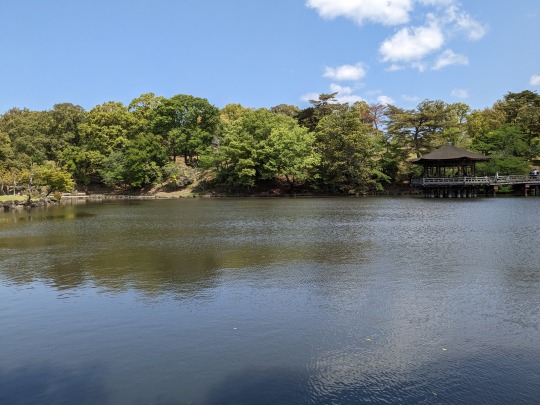


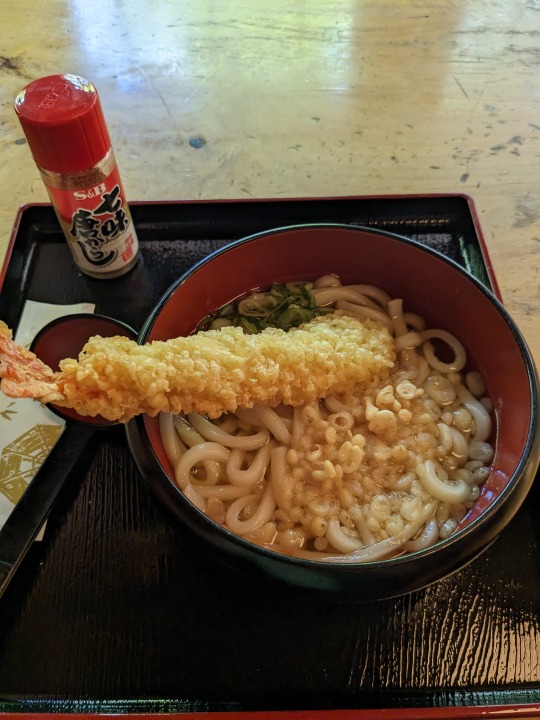








2 notes
·
View notes
Note

Watashi no na wa Kira Yoshikage. Renrei sanjyuu sansai. Jitaku wa Morioh-cho hokuto no bu no bessojidai ni ari, kekkon wa shiite-inai, Shigoto wa Kame-yu chen-ten no kai sha-in de, maiinichi osokuto mo yoru hachii-ji made ni wa kitakusuru. Tabaco-o wa sumanai, sake wa tashinamu-tedo, yoru juu-ichi ji ni wa toko nitsukii, kanarazu hajii-jikan wa suii-min o toru yo-o ni shiiteiru. Neru mae ni at-ta-kae miruuku o nomi ni-juu pun hodo no suutorechi de karada o homu-shite kara toko nitsuku-to hodon do asa made jukusui-sa. Akanbo no yo ni hiro ya suutoresu o noku sazu nii asa me o samaserunda. Kenko-o shintan de mo ijyo nashito iwaretaiyo.
Watashi wa tsune nii kokoro o heion o ne-gate ik-terun ningen toyukoto o setsumei-shite-iru no dai-yo. Kachi make ni koda wa-tari, atama o kakaeruyoo na torabuuruu to ka, yoru mo nemurenai to ita teki o tsukuranai. Toyuu no ga watashii no shakai ni taisuru shise de ari, sorega jibun no kofuku da to toyuukoto o shiteiru. Mo-tomo tatakatte da toshitemo, watashi wa dare ni mo makenn ga ne...
Wow :0
2 notes
·
View notes
Note
Watashi no na wa Kira Yoshikage. Renrei sanjyuu sansai. Jitaku wa Morioh-cho hokuto no bu no bessojidai ni ari, kekkon wa shiite-inai, Shigoto wa Kame-yu chen-ten no kai sha-in de, maiinichi osokuto mo yoru hachii-ji made ni wa kitakusuru. Tabaco-o wa sumanai, sake wa tashinamu-tedo, yoru juu-ichi ji ni wa toko nitsukii, kanarazu hajii-jikan wa suii-min o toru yo-o ni shiiteiru. Neru mae ni at-ta-kae miruuku o nomi ni-juu pun hodo no suutorechi de karada o homu-shite kara toko nitsuku-to hodon do asa made jukusui-sa. Akanbo no yo ni hiro ya suutoresu o noku sazu nii asa me o samaserunda. Kenko-o shintan de mo ijyo nashito iwaretaiyo.
Watashi wa tsune nii kokoro o heion o ne-gate ik-terun ningen toyukoto o setsumei-shite-iru no dai-yo. Kachi make ni koda wa-tari, atama o kakaeruyoo na torabuuruu to ka, yoru mo nemurenai to ita teki o tsukuranai. Toyuu no ga watashii no shakai ni taisuru shise de ari, sorega jibun no kofuku da to toyuukoto o shiteiru. Mo-tomo tatakatte da toshitemo, watashi wa dare ni mo makenn ga ne...
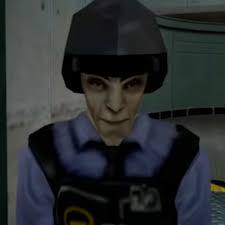
2 notes
·
View notes
Text

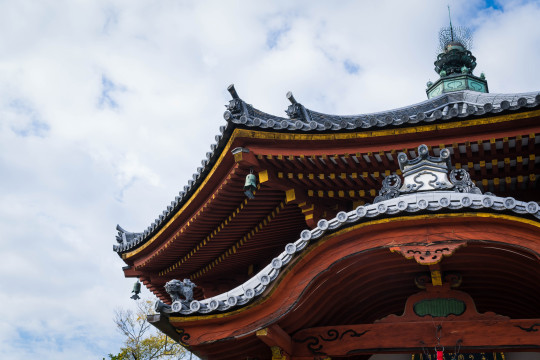
Nan-endo, Kofuku-ji
Nara, Japan
#japan#2023#jpn23#nara23#nara#photography#places#lensblr#photographers on tumblr#photo#travel#wanderlust#travel photography#architecture#buildings#shrine#temple
19 notes
·
View notes
Note
Watashi no na wa Kira Yoshikage. Renrei sanjyuu sansai. Jitaku wa Morioh-cho hokuto no bu no bessojidai ni ari, kekkon wa shiite-inai, Shigoto wa Kame-yu chen-ten no kai sha-in de, maiinichi osokuto mo yoru hachii-ji made ni wa kitakusuru. Tabaco-o wa sumanai, sake wa tashinamu-tedo, yoru juu-ichi ji ni wa toko nitsukii, kanarazu hajii-jikan wa suii-min o toru yo-o ni shiiteiru. Neru mae ni at-ta-kae miruuku o nomi ni-juu pun hodo no suutorechi de karada o homu-shite kara toko nitsuku-to hodon do asa made jukusui-sa. Akanbo no yo ni hiro ya suutoresu o noku sazu nii asa me o samaserunda. Kenko-o shintan de mo ijyo nashito iwaretaiyo.
Watashi wa tsune nii kokoro o heion o ne-gate ik-terun ningen toyukoto o setsumei-shite-iru no dai-yo. Kachi make ni koda wa-tari, atama o kakaeruyoo na torabuuruu to ka, yoru mo nemurenai to ita teki o tsukuranai. Toyuu no ga watashii no shakai ni taisuru shise de ari, sorega jibun no kofuku da to toyuukoto o shiteiru. Mo-tomo tatakatte da toshitemo, watashi wa dare ni mo makenn ga ne...
O h n o .
2 notes
·
View notes
Text
@ronin_do
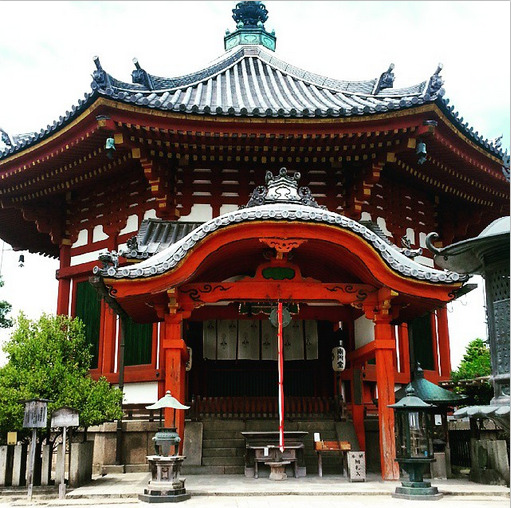


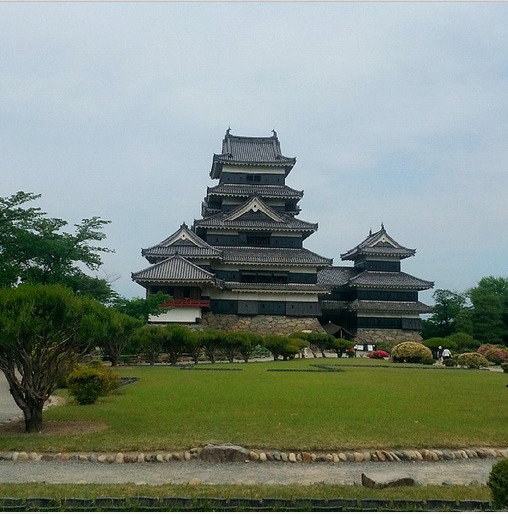


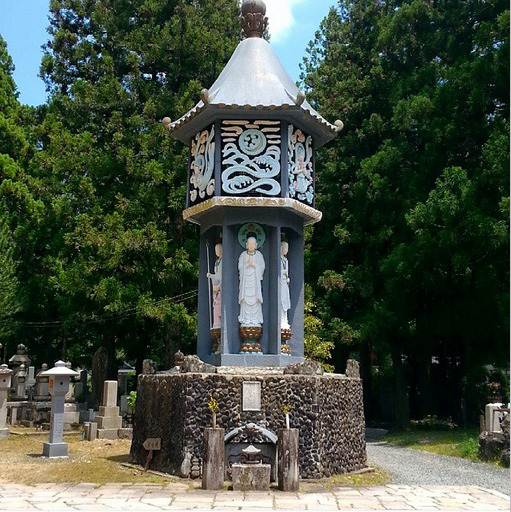
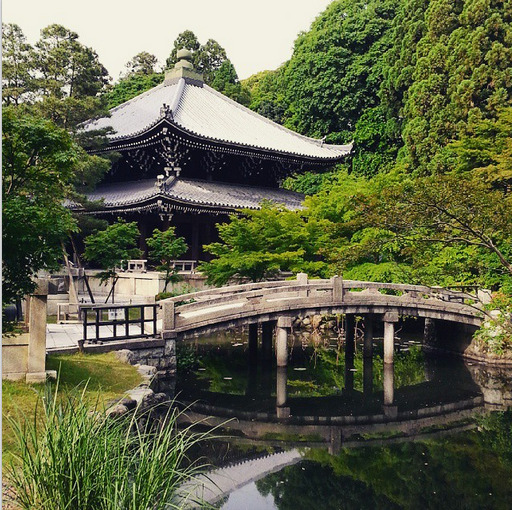

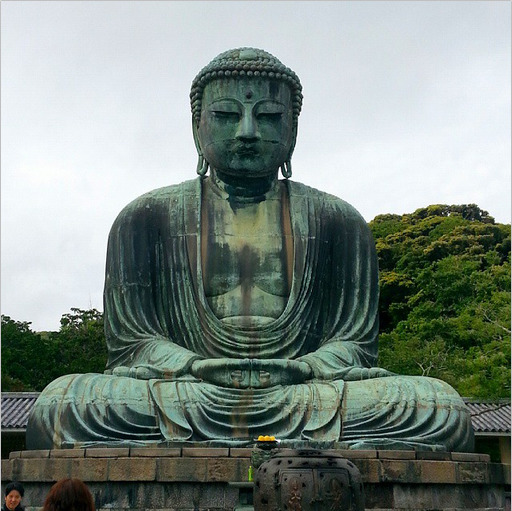
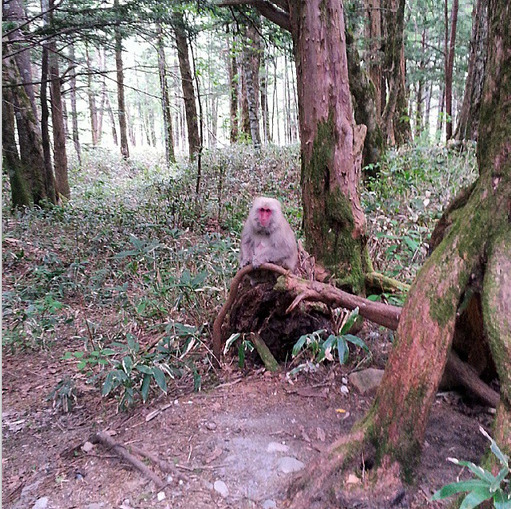
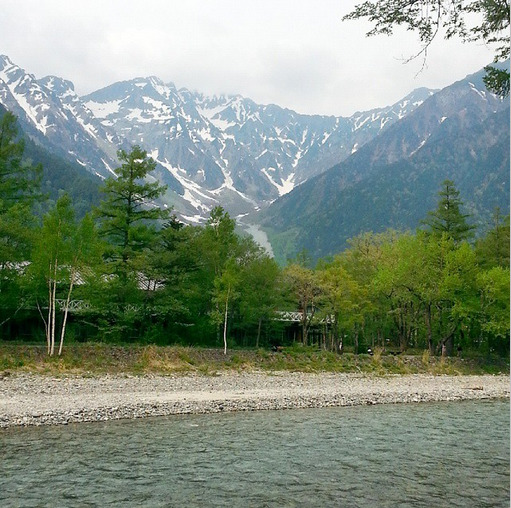


1-. Templo Kofuku-ji
2-. y 3-. Castillo de Himeji, Japón
4-. y 5-. Castillo de Matsumoto, Japón
6-. Castillo de Osaka, Japón
7-. Cementerio Okunoin en monte Koya, Japón
8-. Chion-in, Japón
9-. y 10-. Daibutsu-Japón
11-. De repente, un extraño, Japón
12-. De senderismo por los Alpes japonese
13-. Genbaku Dome, Hiroshima, Japón
0 notes
Text
Day 9 Nara (1)
I hadn't been to Nara since I visited the place somewhat on a whim in 2014. And didn't really see anything but Nara park. I don't think the place changed much. It was pretty much as a remembered it, I think.


First stop of the day, Kofuku-ji. Well, it was more a passing through and taking in some sights on the way to the first planned stop of the day, Yoshiki-en.


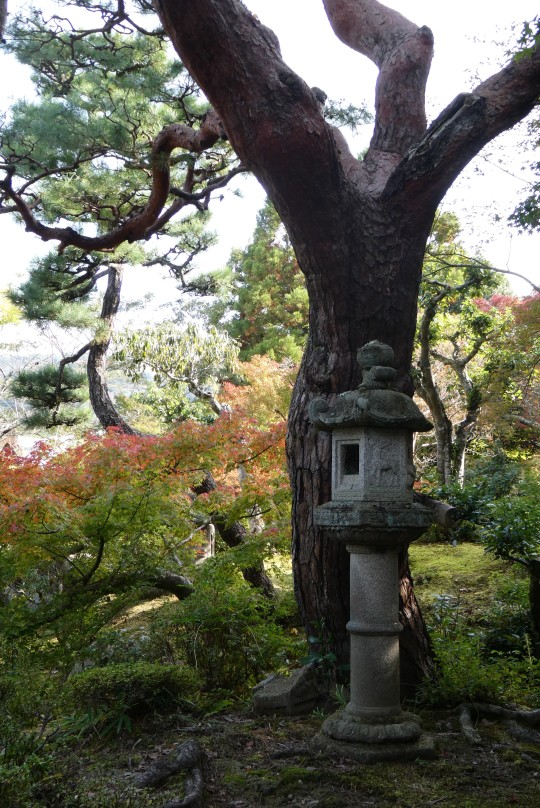
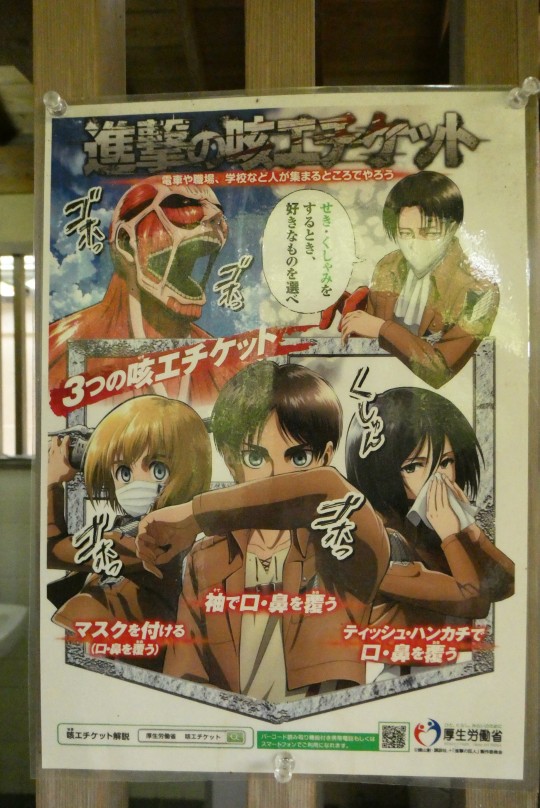
A not too big, Japanese garden. And free entry. Some of the leaves had started chancing color, making it super pretty. Unfortunately, the time of the year meant the flower garden was rather bare. But well... We came also across this really nice poster at the toilet building. Attack on Titan explains "cough etiquette". A remnant of the pandemic. The paper next to it quite literally addressed people who came from Wuhan (and pretty much asked them to stay away/inside.)
From there we walked on through Nara park to Todai-ji... and fed some senbei to the deer.
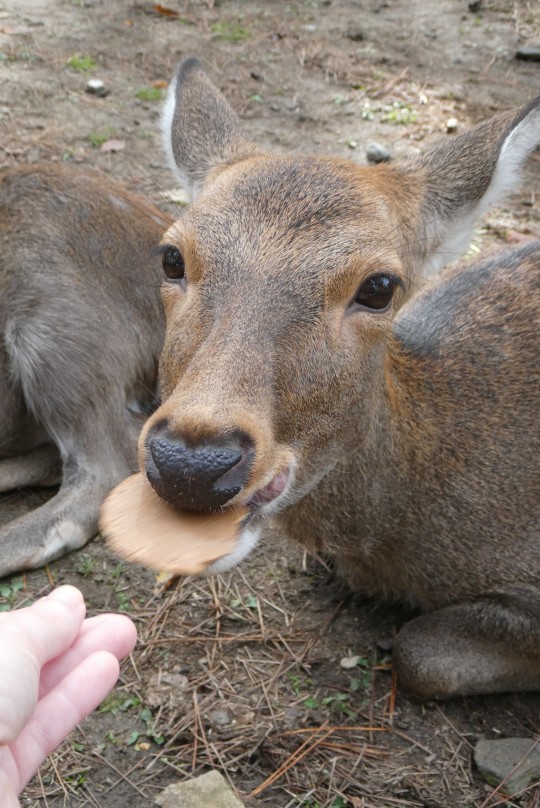
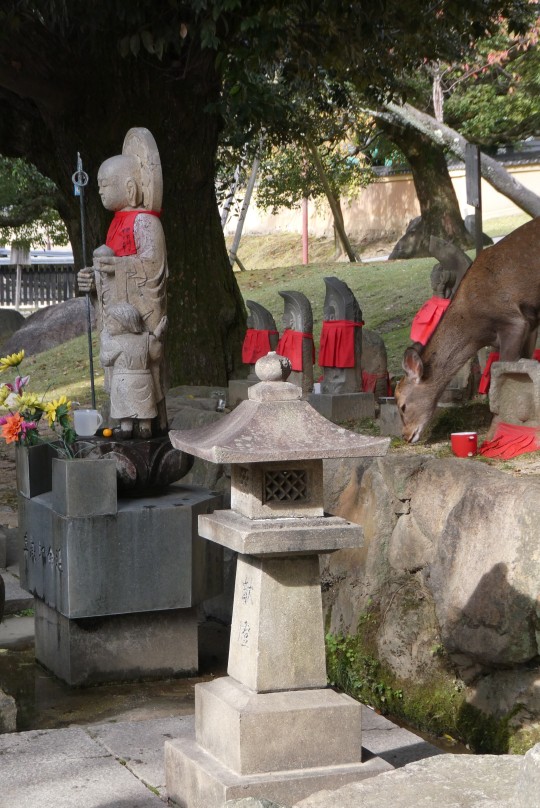

1 note
·
View note